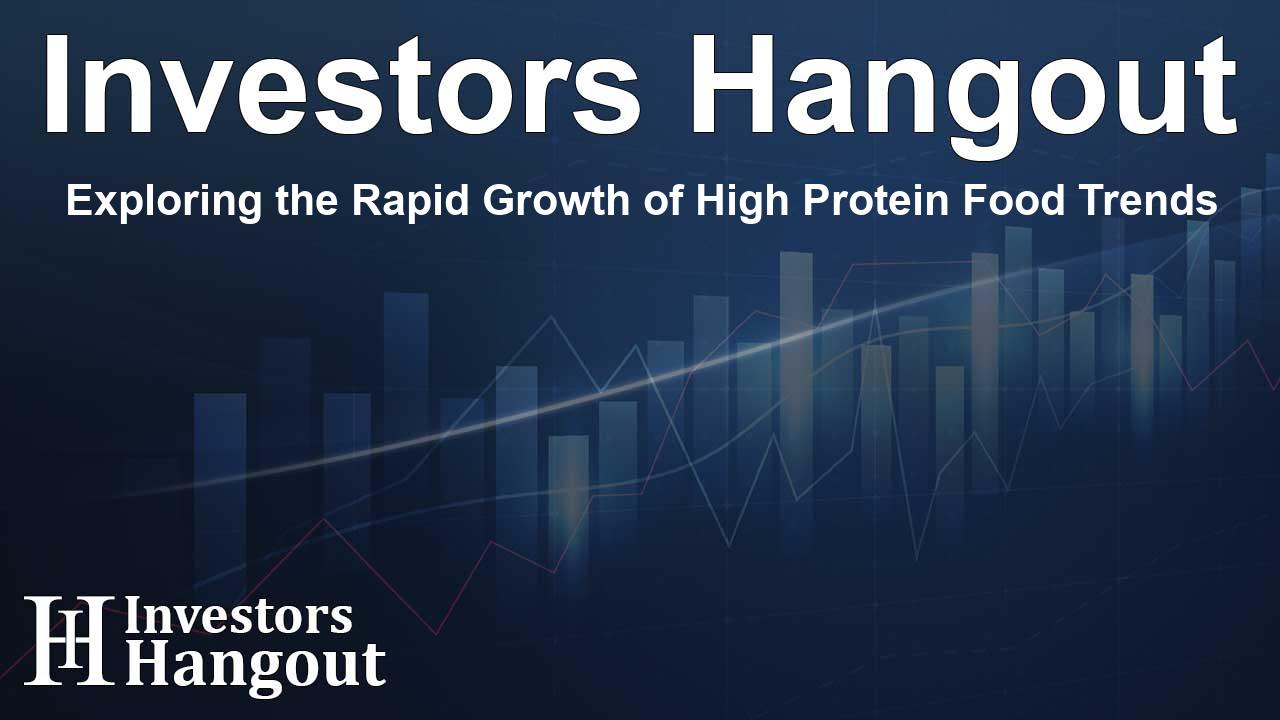Exploring the Rapid Growth of High Protein Food Trends

Rising Demand for High Protein-Based Foods
The high protein-based food market is on a remarkable growth trajectory, projected to rise significantly as consumer preferences shift towards more nutritious options. Many individuals are actively seeking foods rich in protein, resulting in an expected market expansion of USD 50.2 billion between 2024 and 2028. This growth, with an impressive CAGR of 8.65%, reflects a broader societal trend of prioritizing health and wellness.
Market Drivers Shaping the Landscape
One of the primary drivers of this evolution is the increasing consumer inclination towards natural and herbal food products. As people become more health-conscious, they are gravitating toward items that not only provide high protein content but are also derived from natural sources. This trend involves a growing endorsement of high-protein foods by public figures such as athletes and celebrities who promote healthy living.
Innovation in Protein Sources
The market is diversifying with a surge in alternative protein sources. While whey protein has been a staple, consumers are now exploring options such as soy, lentils, and chickpeas. These alternatives not only cater to the taste preferences of a wider audience but are also appealing to those with dietary restrictions. With the advent of new cooking techniques and food formulations, satisfied consumers are keen on protein-rich packaged foods including drinks and bars that support their active lifestyles.
Regulatory Challenges and Opportunities
Despite promising growth, the high protein food market also faces hurdles, particularly from stringent government regulations. For example, in various regions, including Europe, authorities impose strict standards on products marketed as high protein. Companies must navigate these regulations to ensure compliance, which can be challenging but also presents opportunities for innovation and improving product safety.
Cultural Shifts in Consumer Behavior
Moreover, there is a cultural shift with an increased focus on the sustainability of food sources. Consumers are becoming more aware of the ethical implications of their diets, leading to greater demand for plant-based proteins and alternatives to traditional animal products. Many brands are responding to this shift with innovative marketing strategies that highlight the benefits of plant-based diets.
Competitive Landscape and Key Players
In this rapidly evolving market, several key players are leading the charge. Notable companies like Abbott Laboratories, Beyond Meat Inc., and Nestle SA are making significant strides in the high protein food sector by introducing innovative products that resonate with health-focussed consumers. Collaborations with sports brands such as Nike and Adidas are also common, as they capitalize on the fitness trend and use famous athletes to promote their offerings effectively.
Market Segmentation Insights
The market can be segmented based on product type, distribution channels, and geography. Major products include protein-rich drinks, sports supplements, and ready-to-eat meals fortified with high protein. Distribution channels encompass both online and offline categories, appealing to a diverse consumer base seeking accessibility.
Conclusion: A Transformative Future Ahead
As we look forward, the high protein-based food market is set to continue its growth arc, driven by consumer demand for healthier, innovative, and sustainable food options. Companies that can adapt to changing consumer preferences and navigate regulatory challenges will likely find success in this dynamic industry.
Frequently Asked Questions
What is driving the growth of the high protein food market?
The growth is primarily driven by consumer preferences for healthier diets, increased awareness of nutrition, and endorsements from athletes and celebrities.
What types of products are included in the high protein food market?
Products range from protein-rich drinks and sports supplements to nutrition bars and high-protein snacks, catering to health-conscious consumers.
How are companies addressing sustainability in protein sources?
Many companies are innovating their products to include plant-based proteins, focusing on sustainable sourcing and environmentally friendly practices.
What regulatory challenges do companies face?
Companies must comply with strict regulations related to high-protein products, varying by region, particularly in Europe.
Who are the key players in the high protein food market?
Key players include Abbott Laboratories, Beyond Meat Inc., Nestle SA, and other major food manufacturers innovating to meet the demand.
About The Author
Contact Dominic Sanders privately here. Or send an email with ATTN: Dominic Sanders as the subject to contact@investorshangout.com.
About Investors Hangout
Investors Hangout is a leading online stock forum for financial discussion and learning, offering a wide range of free tools and resources. It draws in traders of all levels, who exchange market knowledge, investigate trading tactics, and keep an eye on industry developments in real time. Featuring financial articles, stock message boards, quotes, charts, company profiles, and live news updates. Through cooperative learning and a wealth of informational resources, it helps users from novices creating their first portfolios to experts honing their techniques. Join Investors Hangout today: https://investorshangout.com/
The content of this article is based on factual, publicly available information and does not represent legal, financial, or investment advice. Investors Hangout does not offer financial advice, and the author is not a licensed financial advisor. Consult a qualified advisor before making any financial or investment decisions based on this article. This article should not be considered advice to purchase, sell, or hold any securities or other investments. If any of the material provided here is inaccurate, please contact us for corrections.
